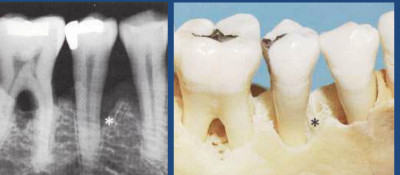What is cerebral palsy disorder?
Cerebal palsy is a group of disorders that affect a person’s ability to maintain his posture and movement. Continue reading
What is cerebral palsy disorder?
Cerebal palsy is a group of disorders that affect a person’s ability to maintain his posture and movement. Continue reading
Continued from Part 1
 Careful radiographic or x-ray examination is done but it may not reveal the presence of a bone defect or its precise morphology.
Careful radiographic or x-ray examination is done but it may not reveal the presence of a bone defect or its precise morphology.
Direct examination of bone morphology:
There are three pairs of major salivary glands located in and around the mouth and throat: the parotid, submandibular and sublingual glands. The parotid glands are the largest and overlie the angle of the jaw in front of the ear. From the gland a duct drains saliva into the mouth. The submandibular glands lie deep to the horizontal portion of the lower jaw and their ducts enter the mouth under the tongue. The sublingual glands lie close to the submandibular ducts. Continue reading
 WHAT ARE NEONATAL AND NATAL TEETH?
WHAT ARE NEONATAL AND NATAL TEETH?
Natal teeth are teeth which are present in the oral cavity at the time of birth where as neonatal teeth erupt during 30 days of life. Primary tooth normally starts erupting at about 6 months of age. Natal teeth might resemble normal primary teeth in terms of size and shape. However, they can be smaller, yellowish and root formation of the teeth may not be completed/total absence during the time of eruption. This lack of root development can cause  mobility of the neonatal tooth. Continue reading
 Periodontal disease involves the peridontium consisting of the gums, alveolar or jaw bone, the periodontal ligament and the cementum of tooth. Therefore it is of no surprise if the disease leads to bone defects in our jaw bone or cause furcation involvement. Continue reading
Periodontal disease involves the peridontium consisting of the gums, alveolar or jaw bone, the periodontal ligament and the cementum of tooth. Therefore it is of no surprise if the disease leads to bone defects in our jaw bone or cause furcation involvement. Continue reading
Just like baseball and gymnastics are types of sports, an orthodontist (say: or-thoh-don-tist) is a type of dentist. Using braces, retainers, and other devices, an orthodontist helps straighten a person’s teeth and correct the way the jaws line up.
Straight teeth and aligned jaws create nice smiles. On top of that, when your jaws and teeth are well aligned, it is easier to chew food. Orthodontic care can even help prevent snoring! Continue reading
One of the prime causes of dental implant failure is infection. However, in the United States at least, this is very uncommon. Dental implant manufacturers make great efforts to sterilize and package their dental implants so that there is no bacterial contamination. The mouth contains many potentially harmful bacteria that lurk in the gums tissues and any of these bacteria can possibly invade the area around an implant. Continue reading
This innovative technique is revolutionizing the way people around the world receive dental implants. Dental implants are definitely the best option to help those with missing teeth. However, traditional implants are expensive and a very time consuming process often taking from 6 to 18 months to complete with multiple surgeries. With same day implants you will not have to wait 2 to 6 months until you have teeth. On the day of your implant surgery you will leave the office with a temporary crown attached to your implant. One month later the permanent crown can be attached. Continue reading
If you’re searching for an OraMD Review or OraMD Reviews – then the chances are you’re trying to get a cure for bad breath and/or gum disorders. It’s no secret that your dentist’s solution (fluoride toothpaste) simply doesn’t work. If it did – you wouldn’t be looking for a review of OraMD. For years we’ve all been completely misled by the toothpaste makers. So – if you’re going to brush your teeth twice a day – better make sure you’re using a natural product that will do the job. Continue reading
Continued from Part 1